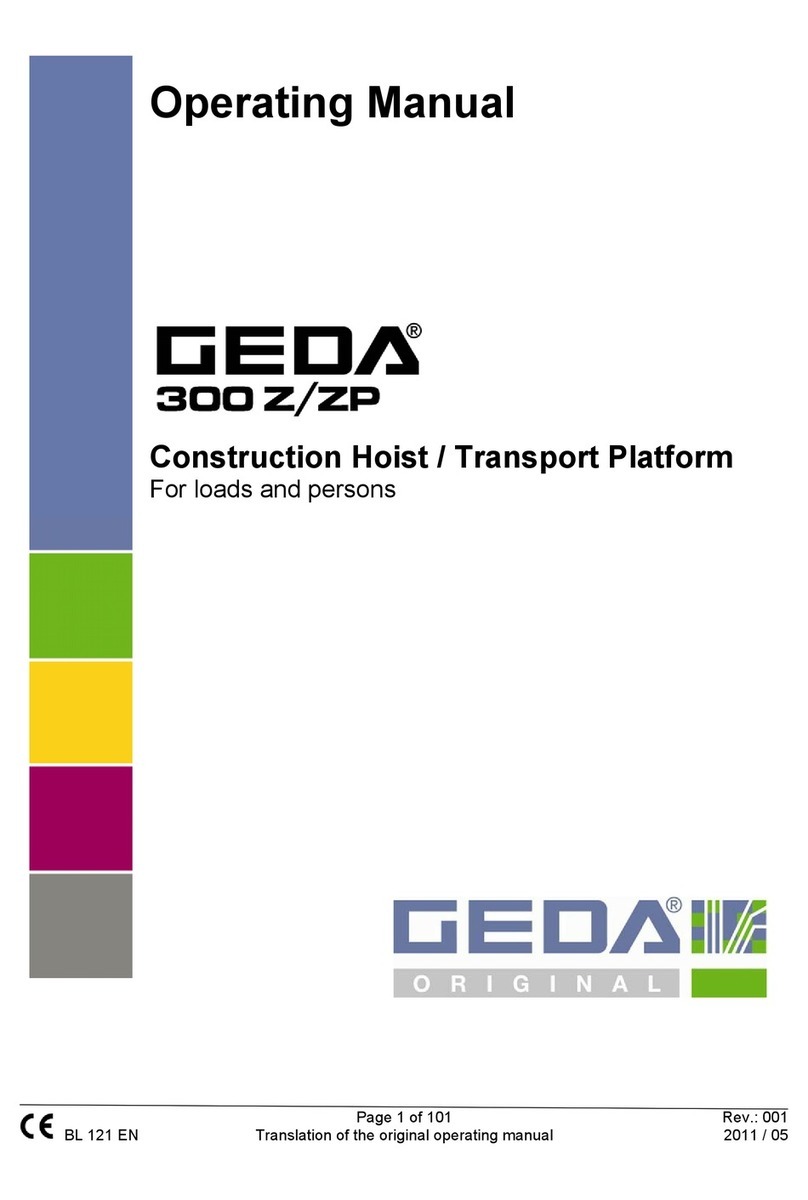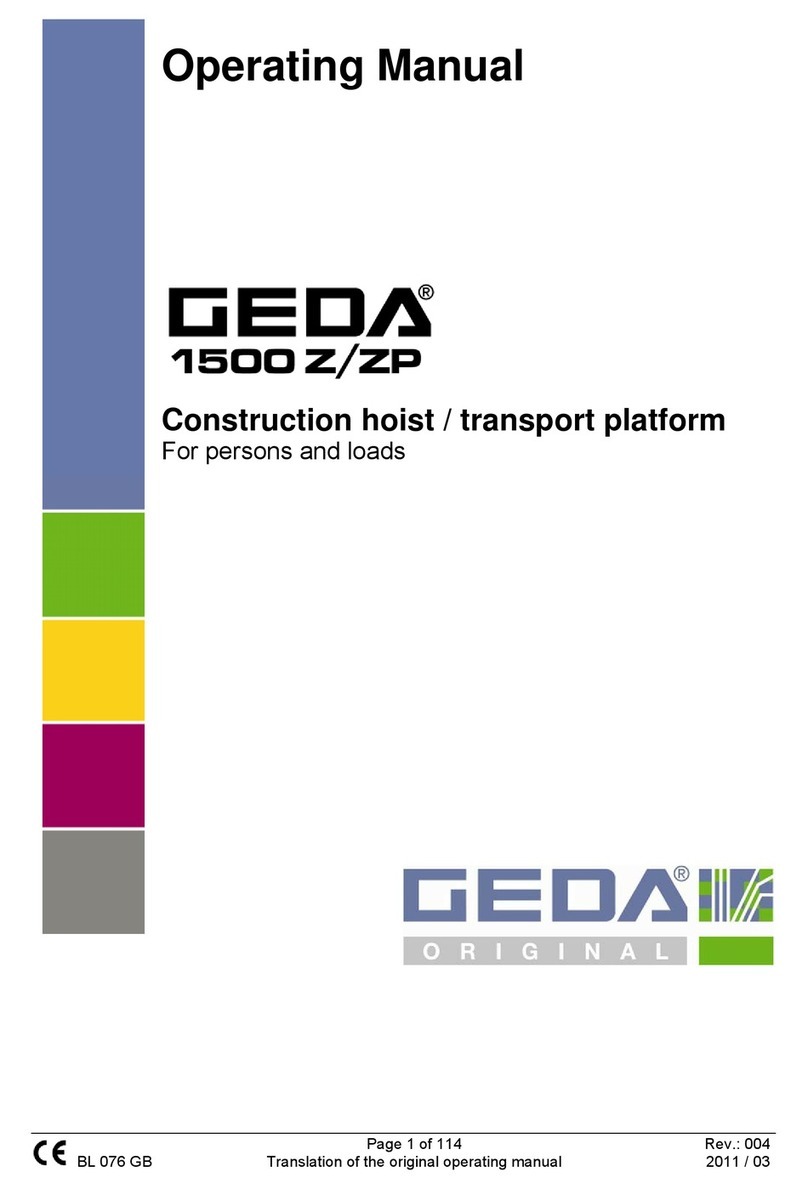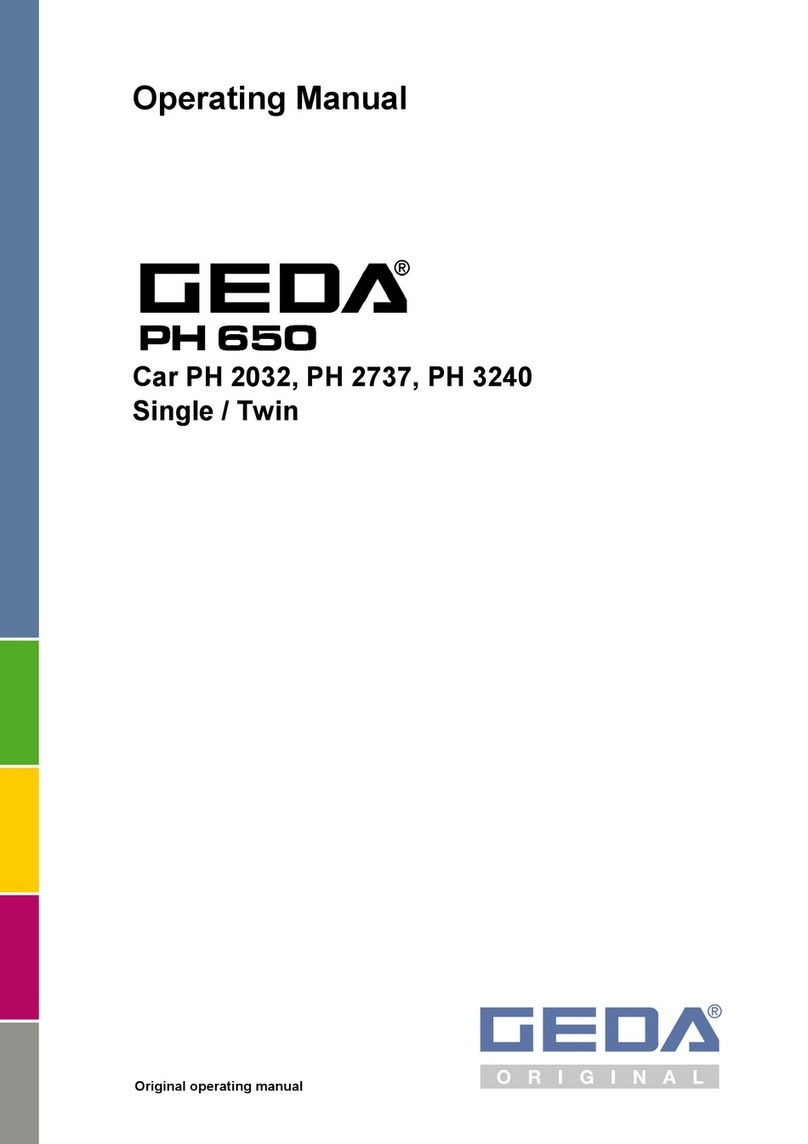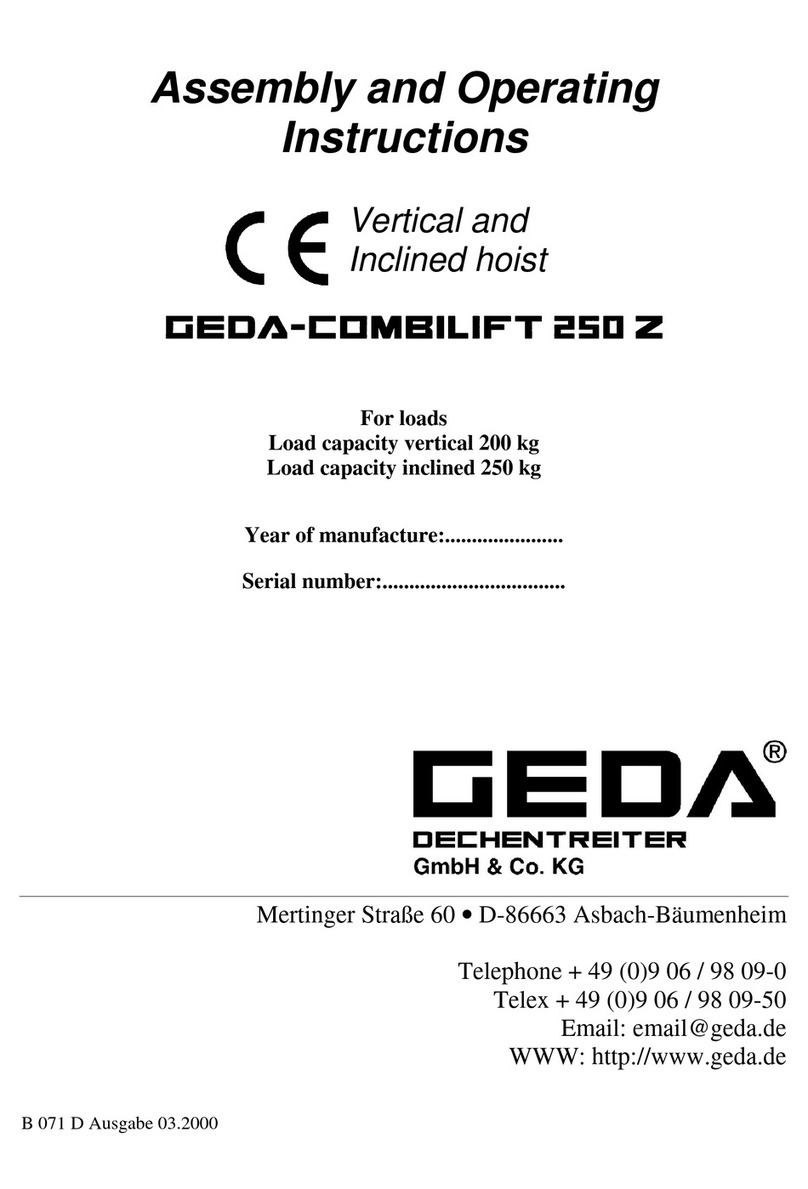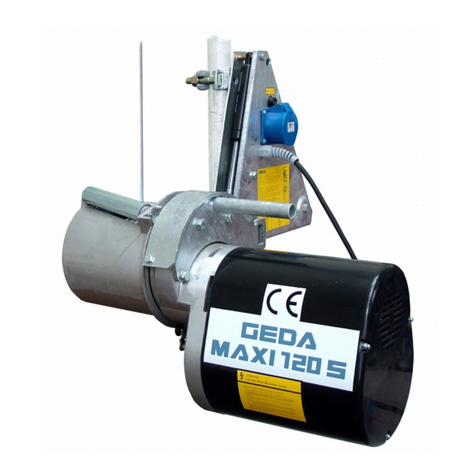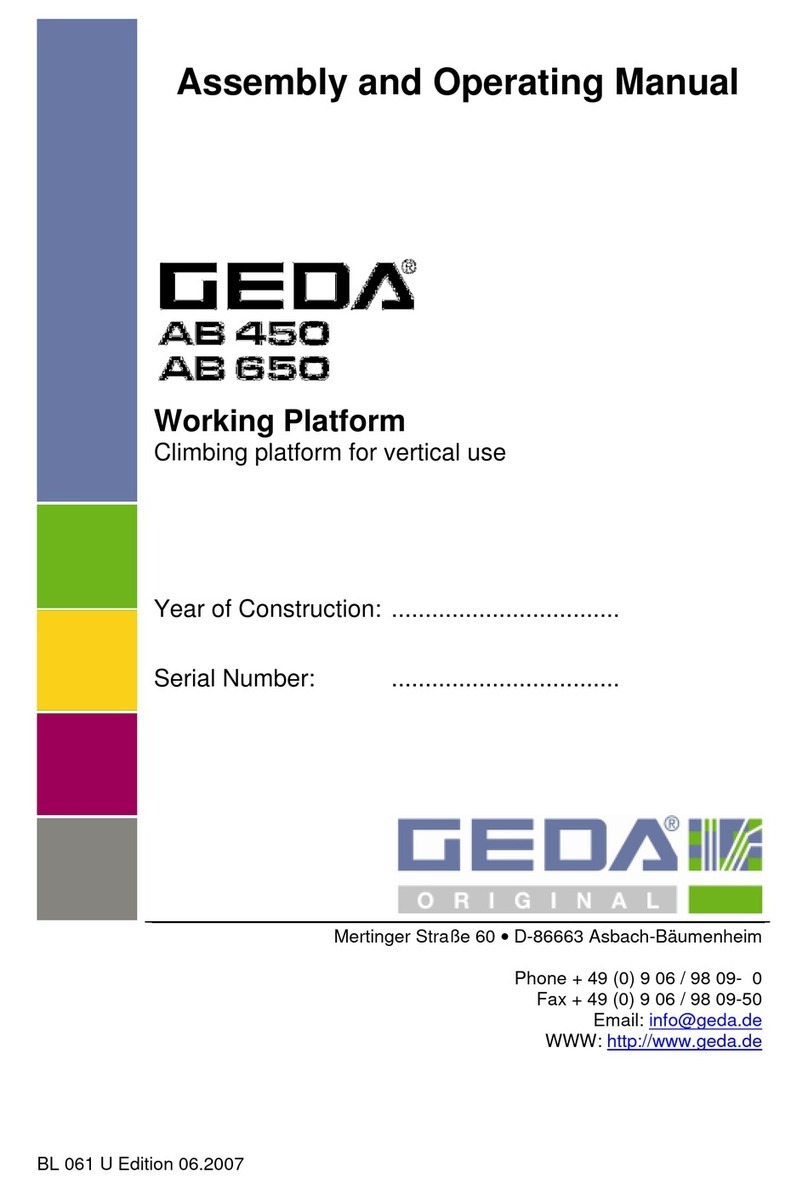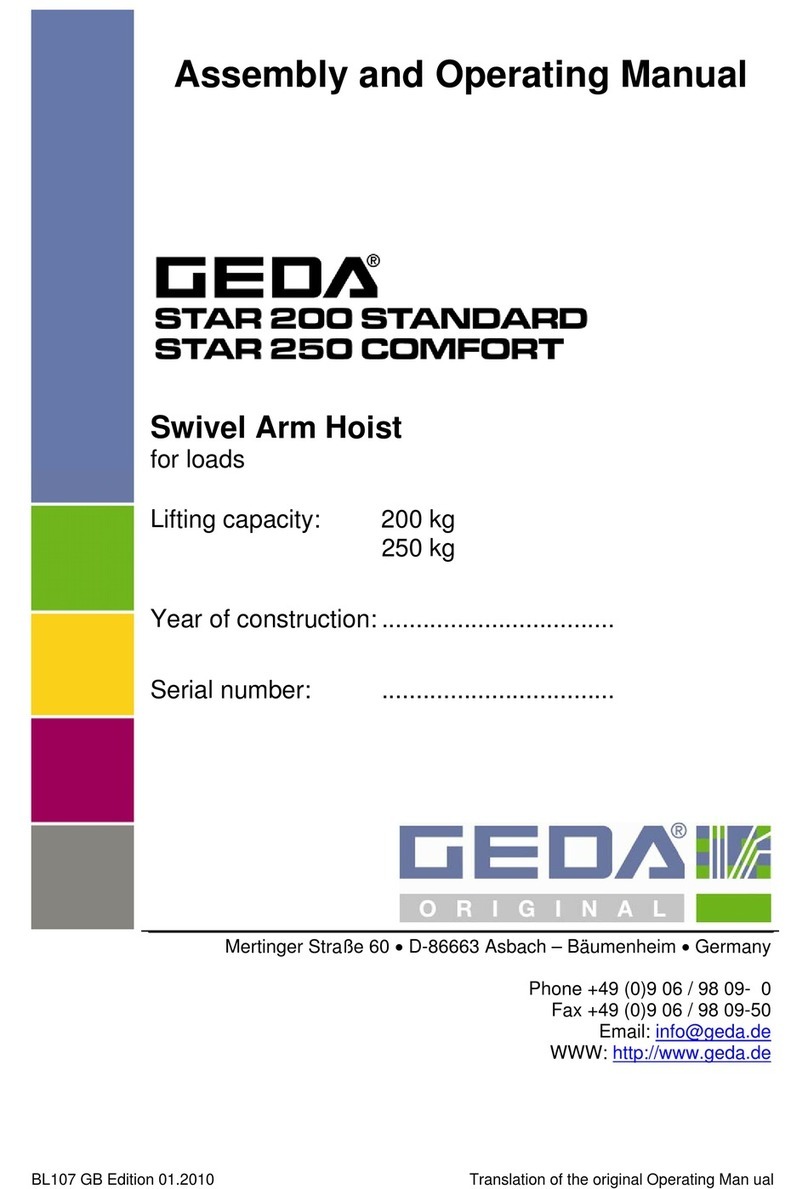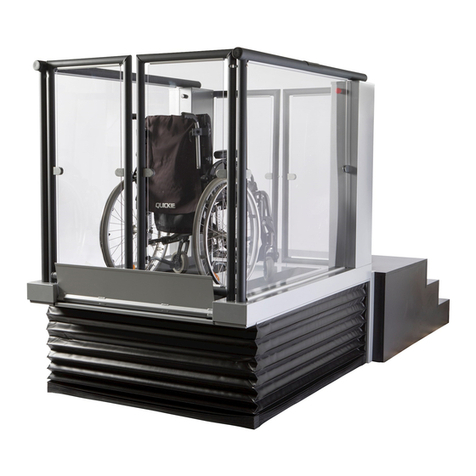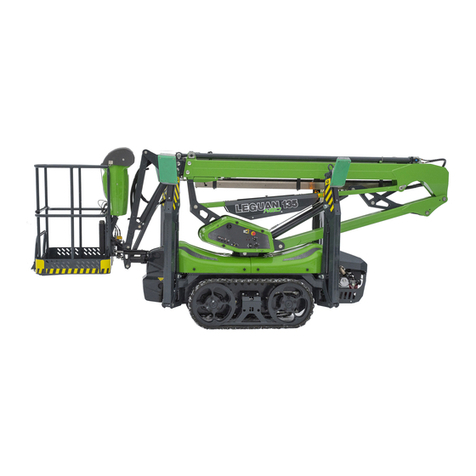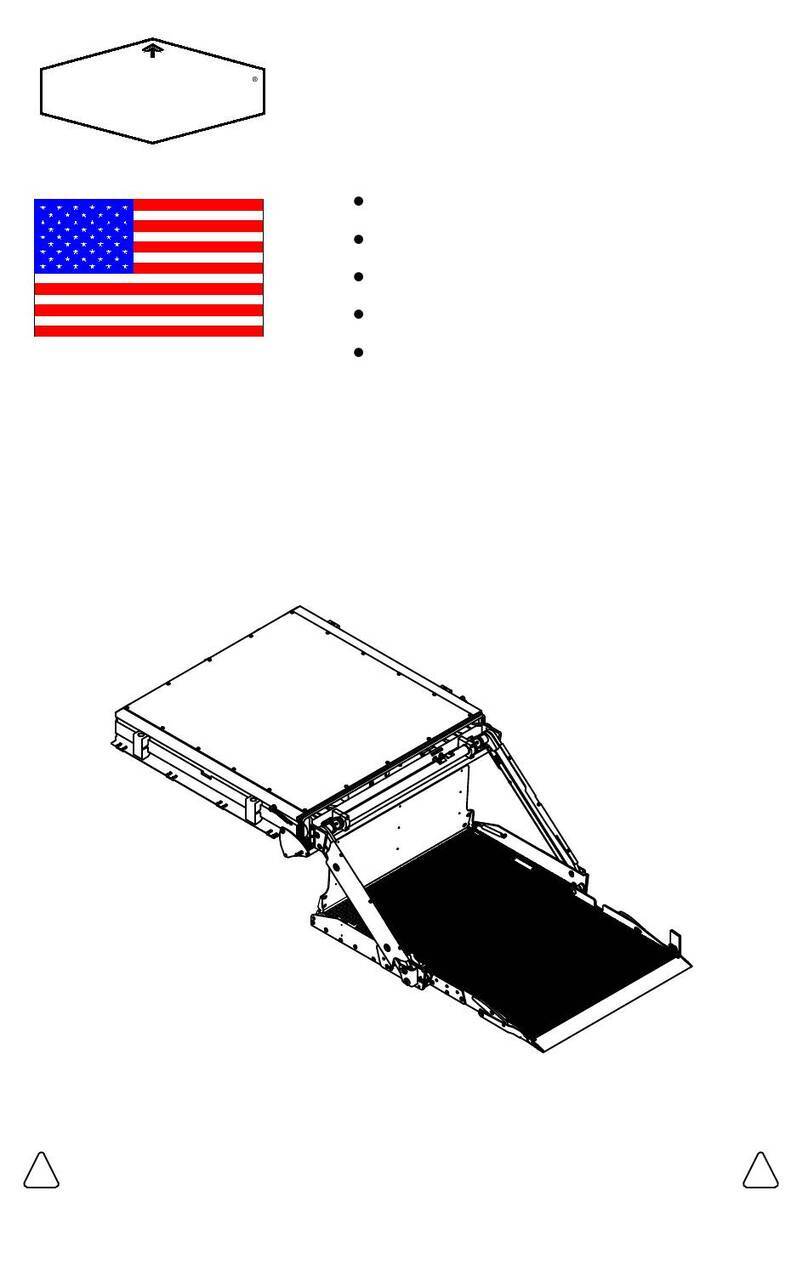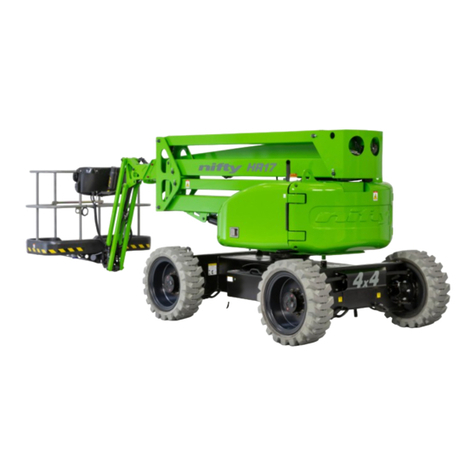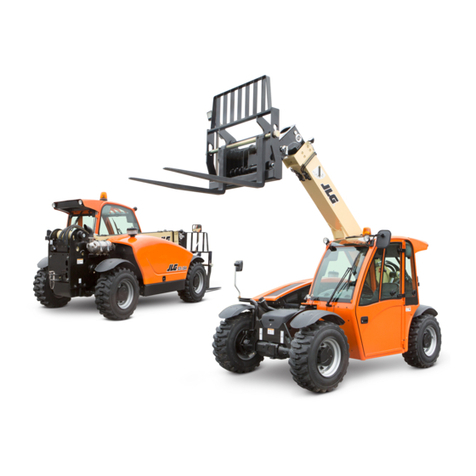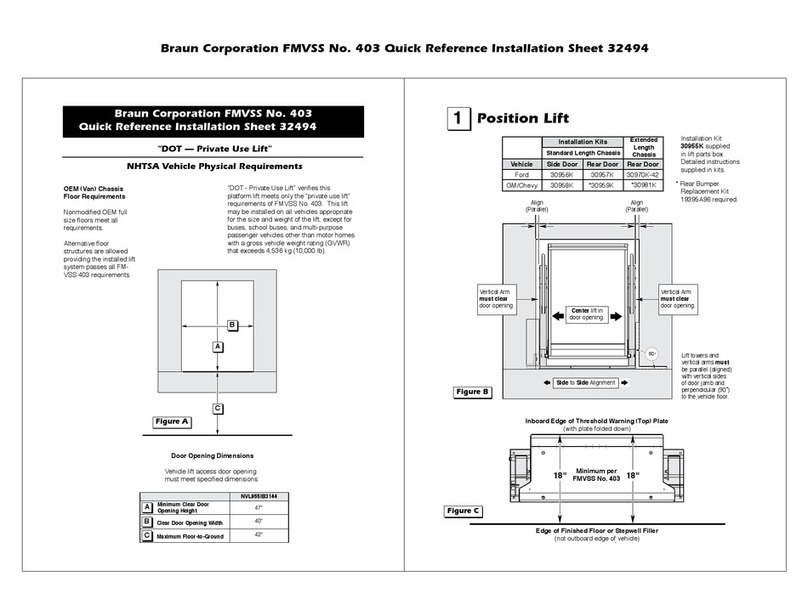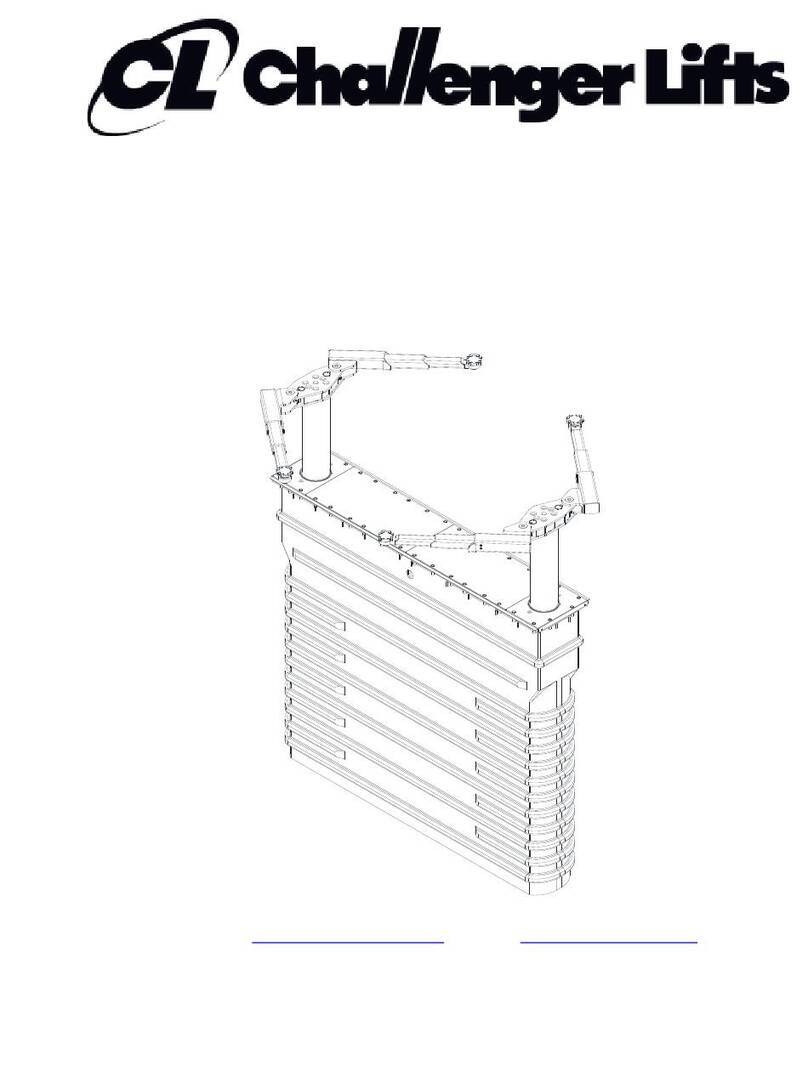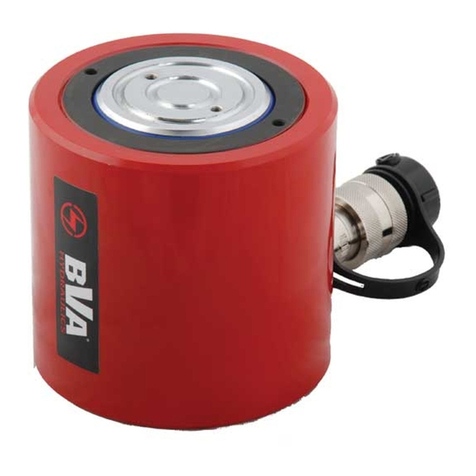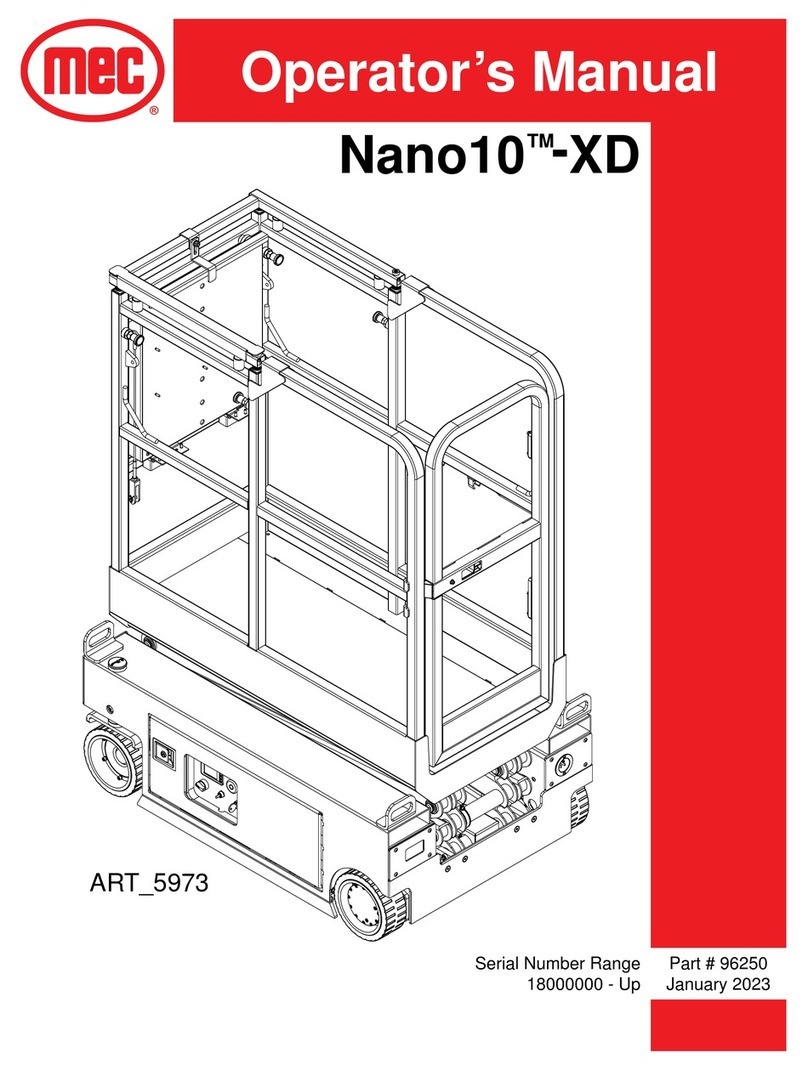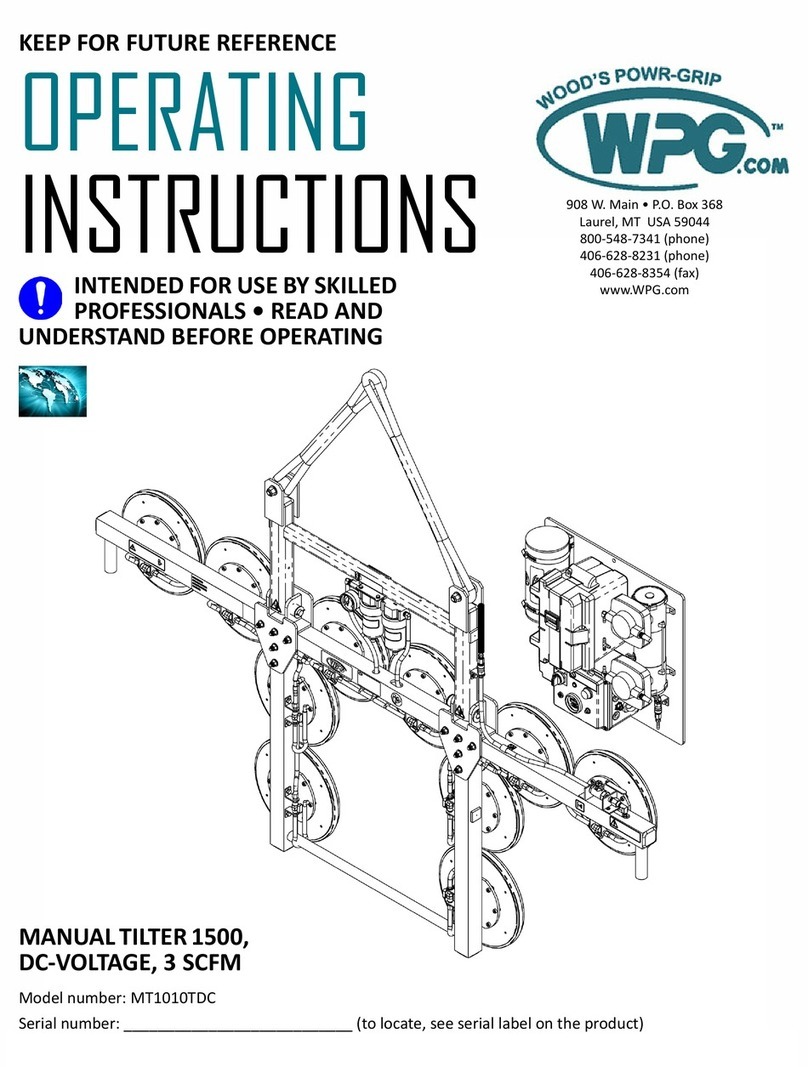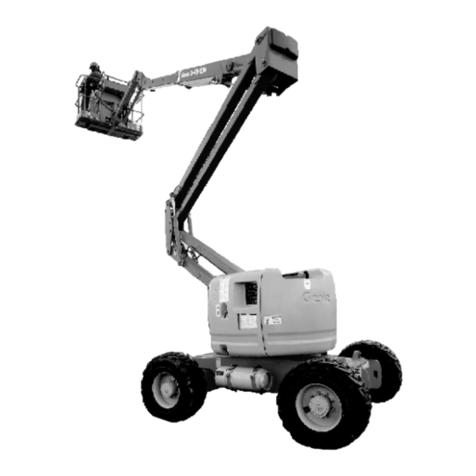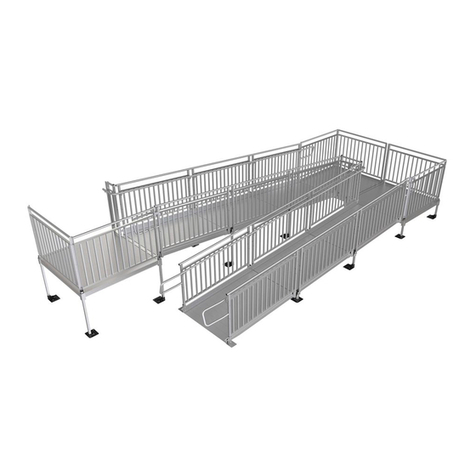
Rack and pinion hoist
Assembly and operating manual 5 / 92 BL131 GB Edition 08.2015
Table of Contents:
1General information........................................................................................................................... 7
1.1 Information about the operating manual ..................................................................................... 7
1.2 Information about the machine ................................................................................................... 7
1.3 Name and address of the manufacturer ..................................................................................... 8
1.4 Notes about the author and industrial property rights ................................................................. 8
1.5 Instructions for the operating company....................................................................................... 9
1.6 Proper use................................................................................................................................. 10
1.6.1 Requirements of assembly personnel .................................................................................. 11
1.6.2 Operating personnel ............................................................................................................. 11
1.6.3 Improper use......................................................................................................................... 11
2General safety information ............................................................................................................. 12
2.1 Residual risks............................................................................................................................ 12
2.2 Safety instructions for operating personnel............................................................................... 13
2.3 Safety instructions for transport ................................................................................................ 14
2.4 Safety instructions for operation ............................................................................................... 15
2.5 Safety instructions for servicing, maintenance and troubleshooting......................................... 16
2.6 Safety during work on the electrics ........................................................................................... 18
3Checks .............................................................................................................................................. 19
3.1 Documenting the results ........................................................................................................... 19
3.2 Checks before initial commissioning......................................................................................... 20
3.3 Checks after assembly / daily before starting operation ........................................................... 20
3.4 Recurring inspections................................................................................................................ 20
3.5 Dynamic tests............................................................................................................................ 21
3.6 Static test................................................................................................................................... 21
3.7 Checks after extreme weather conditions................................................................................. 22
4Technical description ...................................................................................................................... 23
4.1 Description of function............................................................................................................... 23
4.2 Machine equipment................................................................................................................... 25
4.3 Equipment as accessories ........................................................................................................ 30
4.3.1 Standard push-on frame for the load platform...................................................................... 30
4.3.2 Special push-on frames ........................................................................................................ 31
4.3.3 Spindle .................................................................................................................................. 33
4.3.4 Manoeuvrable bogie ............................................................................................................. 33
4.3.5 Single axle trailer .................................................................................................................. 34
4.3.6 Small on-site main cabinet.................................................................................................... 34
4.4 Technical data ........................................................................................................................... 35
4.4.1 Data for 230 V drive .............................................................................................................. 36
4.4.2 Data for 400 V drive .............................................................................................................. 36
4.4.3 Load platform ........................................................................................................................ 36
4.4.4 Extension to base unit .......................................................................................................... 37
4.5 Anchoring and spatial requirement ........................................................................................... 38
4.6 Requirements for the site of installation.................................................................................... 44
4.6.1 Foundation ............................................................................................................................ 44
4.6.2 Ground pressure................................................................................................................... 44
4.6.3 Mains connection .................................................................................................................. 45
5Transport .......................................................................................................................................... 46




















